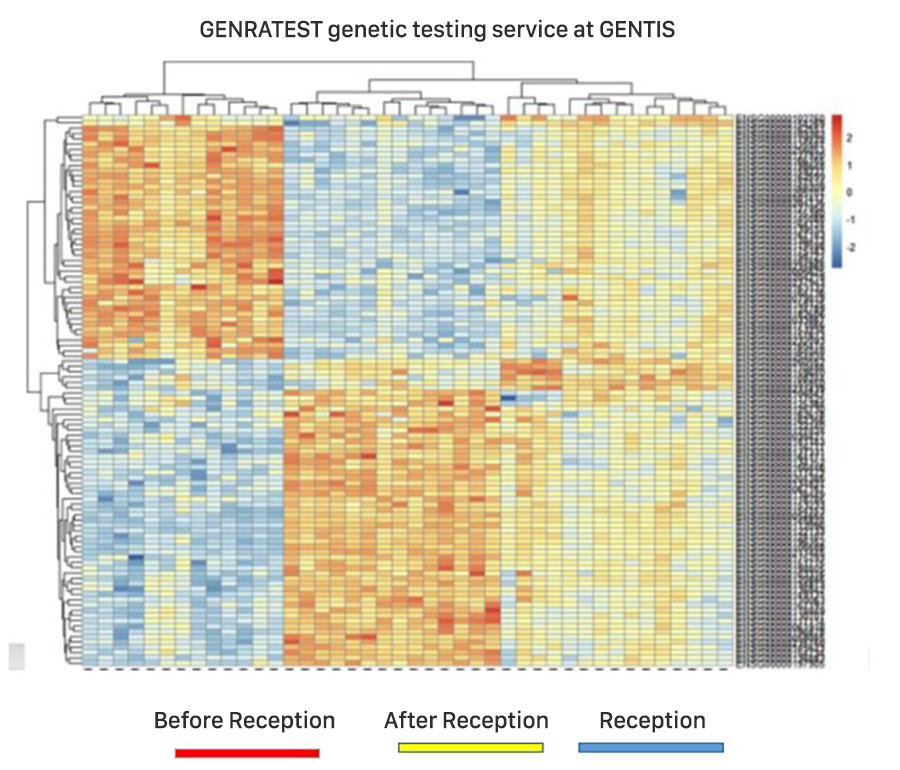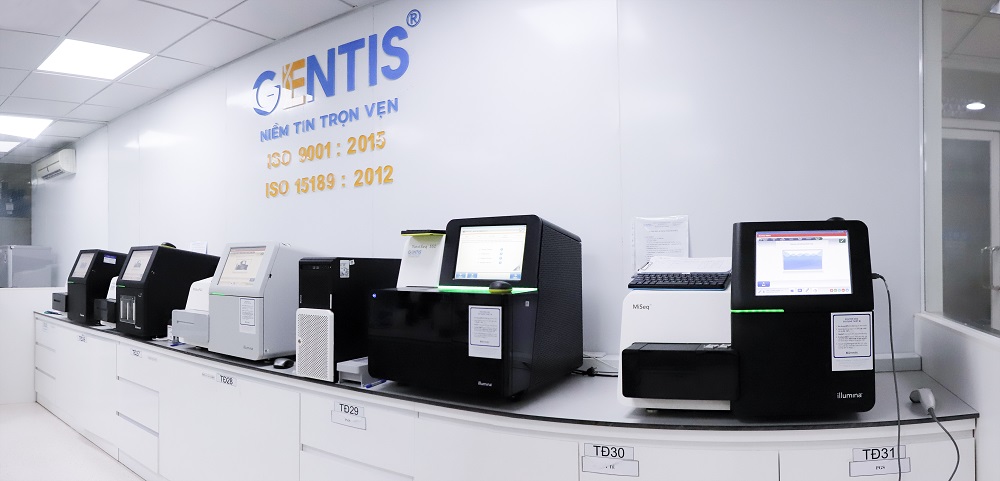
ULTRAGEN - DIAGNOSIS OF GENERAL DISEASE PGT UPGRADE FSH PGTEST-M TEST FOR CONGENITAL ADRENAL HYPERPLASIA (CAH) PGT NEXT Genratest HPV Thrombophilia ASEM
Genratest
GENRATEST - Detect the window of implantation
- Genratest is a genotypic expression-based analytical test used to determine the optimal time for embryo transfer (window of implantation).
- Using NGS to analyze the expression of whole genomes related to uterine receptivity status.
- Based on genotype expression, endometrial lining is divided into 3 types: Pre-reception, Reception and Post-Reception.
Indication
- People who have failed embryo transfer many times (≥ 2 times), good embryo quality and good uterine lining but failed embryo transfer for unknown reasons.
- ≥1 failed use of recipient eggs, good embryos, good uterine lining, but failed embryo transfer of unknown cause.
Rationale
1, Study by Katzorke, Vilella, Ruiz, Krüssel, & Simón, 2016, performed on 6,000 patients with embryo transfer failure, up to 28.6% of patients were in a non-recipient state. In which 85% of patients are in the pre-reception state, 12.6% of the patients are in the post-reception state.
2, Study by Tan et al., 2018, on 88 patients with embryo transfer failure in the Genratest group compared with the control group without Genratest, the results were:
- Increase the rate of successful embryo transfer: 73.7% in the Genratest group compared to 54.2% in the control group.
- Increase the rate of successful pregnancy: 63.2% in the group using Genratest compared to the control group 41.7%
Procedure
- Biopsy of the uterus (P+5 or LH+7), fill out the test request form
- Put the sample into the storage tube, shake well, store at 4-8oC
- Transport to GENTIS laboratory with gel ice
- Sequencing on NGS
- Analyze results
- Send the results to the IVF Center (From 12 days after receiving the sample)
- Transfer embryos according to the recommended date on the results
GENRATEST AT GENTIS
- Reads up to 3,000,000 reads/sample
- Proprietary analysis software that analyzes the entire transcriptome of the tissue sample, thereby providing an assessment of the expression of genes of interest and the status of the endometrium.
Using Illumina's next generation sequencing system (Miseq, Nextseq)

- The first unit in Vietnam to have a large-scale synchronous laboratory system in Hanoi and Ho Chi Minh City meeting international standards ISO 9001: 2015
- Since 2010, Gentis has successfully performed analysis of more than 150,000 samples.
- There are more than 30 sample collection points across the country, ensuring to provide customers with the most convenient, fast and accurate services.
- Pioneer in applying advanced genetic analysis technologies in the world such as the United States, Europe, and Korea.
- GENTIS is also a place to gather a team of scientists, experienced consultants in the field of genetics, and a team of professional, enthusiastic and thoughtful technicians and consultants to bring the best services to our customers.

REGISTER FOR SERVICES AT GENTIS
Thank you for choosing and using GENTIS services.
Please fill in the information below to receive our supports and consultations!
Please fill in the information below to receive our supports and consultations!







